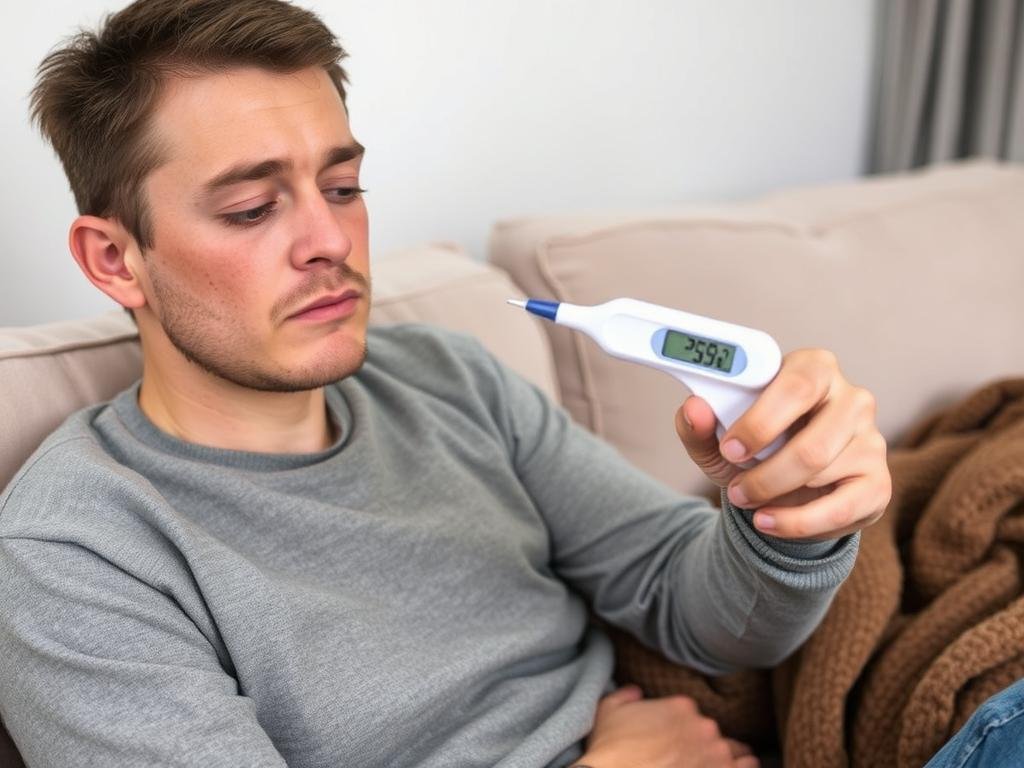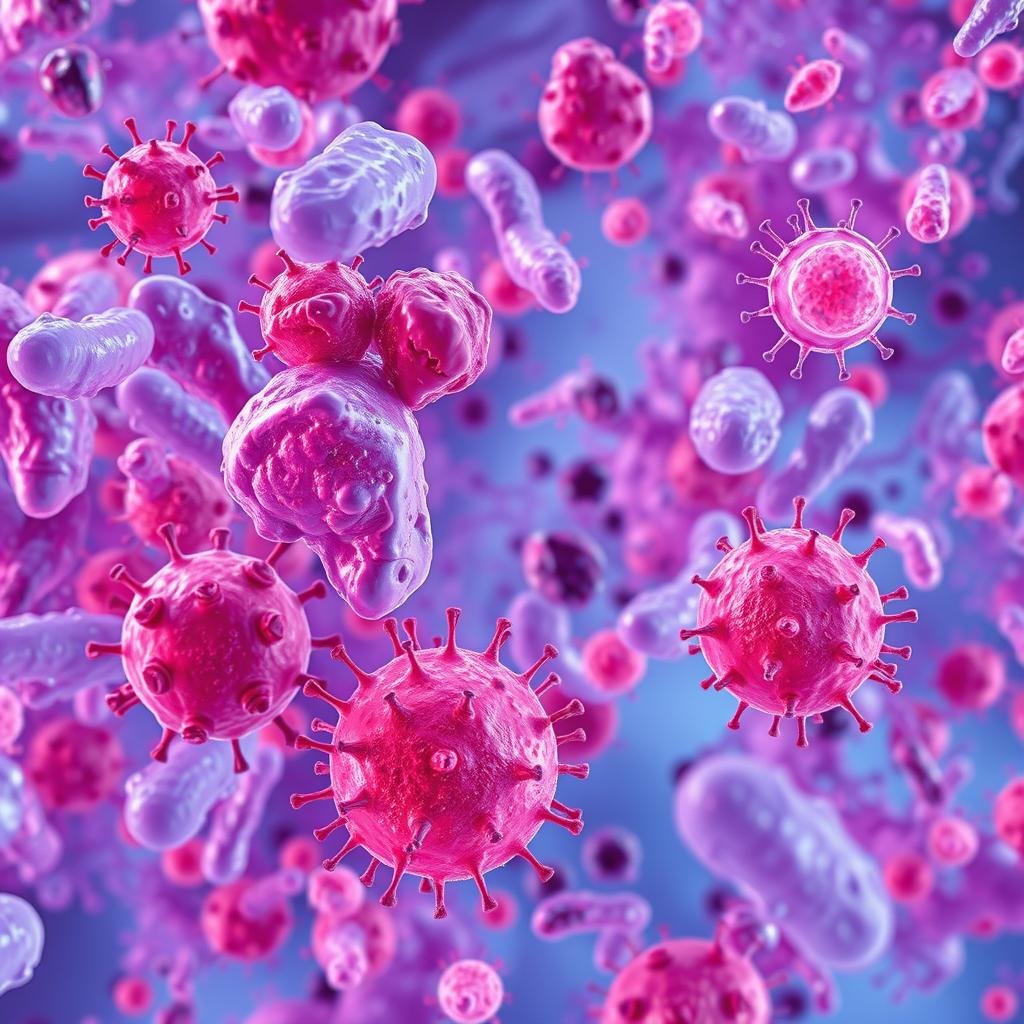Did you know your genes can make you 40 to 60 percent more likely to develop addictionChronic disorder with compulsive use despite harm; brain changes. More?
According to Dr. Meenu Vaid, MD, addiction is a chronic brain disease causing compulsive drug, alcohol, or behavior use despite negative consequences. Addiction significantly impacts not just the individual but also their loved ones, health, and overall quality of life.
Knowing what addiction is is key to helping people get better. We’ll look into addiction’s causes, treatments, and how to support those in recovery. This will help those seeking help and their loved ones.
Key Takeaways
- Addiction is a chronic brain disorder, not a moral failing
- Genes play a significant role in addiction risk
- Brain changes persist even after stopping drug use
- Addiction impacts judgment, decision-making, and behavior control
- Early drug use increases the risk of future addiction problems
- Recovery is challenging but achievable with proper support and treatment
Understanding Addiction: Definition & Basic Concepts
Addiction is a complex chronic medical disease that affects millions worldwide. It involves brain circuits, genetics, environment, and life experiences. To understand “what is addiction?”, we must look at its clinical definition, brain impact, and chronic disease classification.
The Clinical Definition of Addiction
The American Society of Addiction Medicine (ASAM) defines addiction as a chronic, treatable medical disease involving brain circuits, genetics, the environment, and personal experiences. Addiction causes individuals to compulsively seek substances or behaviors despite harmful outcomes, altering brain functions related to reward, stress, and self-control.

How Addiction Affects the Brain
Addiction alters brain functions in critical areas like reward and self-control. These brain changes often persist long after the individual stops using substances or addictive behaviors, making recovery challenging but achievable with professional help.
Addiction as a Chronic Disease
Addiction shares characteristics with other chronic diseases like diabetes or heart disease:
Understanding addiction as a chronic disease helps reduce stigma and promotes effective, compassionate treatment approaches.
| Characteristic | Addiction | Other Chronic Diseases |
|---|---|---|
| Onset | Voluntary behavior progressing to compulsive | Often influenced by lifestyle choices |
| Genetic Component | Approximately 50% risk | Varies, but often present |
| Treatment Approach | Ongoing management, may include medication | Ongoing management, often includes medication |
| RelapseReturn to substance use or behavior after a period of abstinence. Risk | High, even after years of abstinenceRefraining from addictive substances or behaviors completely. | Present, requires continued care |
Seeing addiction as a chronic disease helps reduce stigma. It also promotes more effective treatment for substance and non-substance addictions.
Types of Addiction: Substance and Behavioral
Addiction comes in many forms. Knowing the types is key to tackling these issues. There are substance addictions and non-substance addictions, each with its own set of challenges.

Addictions fall into two categories:
Substance Addictions:
- Alcohol
- Opioids (painkillers, heroinIllegal opioid causing euphoria, high addiction, and overdose risk.)
- Nicotine (smoking, vaping)
- Marijuana
- Prescription medications
Behavioral (Non-Substance) Addictions:
- Gambling (officially recognized)
- Internet or video gaming
- Shopping
- Food
- Exercise
Both share traits like loss of control, continued use despite negative consequences, and toleranceNeeding more of a substance to achieve the same effect. or withdrawalPhysical/mental symptoms when stopping an addictive substance..It’s also common for people to have multiple addictions.
Understanding addiction types is vital for prevention, diagnosis, and treatment. Whether it’s substance or non-substance addiction, seeking professional help is often necessary for recovery.
Signs and Symptoms of Addiction
Spotting addiction early is key to helping someone. What are the signs of addiction? They can show up in many ways, affecting a person’s health, mood, and actions.
Physical Signs:
- Sudden weight loss/gain
- Poor hygiene
- Bloodshot or dilated eyes
- Changes in sleep patterns
Psychological Signs:
- Anxiety or depression
- Irritability or mood swings
- Difficulty concentrating
Behavioral Changes:
- Secretive actions
- Neglecting responsibilities
- Social withdrawal
- Financial or legal troubles
When should I see my about addiction?
If you see several signs or if substance use gets in the way of daily life, it’s time to get help. Early action can stop serious health issues and help with recovery.
| Substance | Common Signs of Addiction | Prevalence in US (2020) |
|---|---|---|
| Alcohol | Drinking alone, memory blackouts | 14.5 million adults |
| Opioids | Drowsiness, constricted pupils | 2 million users |
| Marijuana | Red eyes, increased appetite | 48.2 million users |
| CocaineStimulant with high addiction and heart risk. | Dilated pupils, hyperactivity | 5.2 million users |
What Causes Addiction? Biological, Psychological, and Social Factors
Biological Factors:
Genes influence addiction risk by 40-60%. Brain scans show addiction reduces activity in areas responsible for decision-making and self-control.
Psychological Factors:
Mental health issues, such as depression, anxiety, and past trauma, increase addiction vulnerability.
Social & Environmental Factors:
- Early substance use
- Peer and family influences
- Easy access to substances
- Traumatic or stressful childhood experiences
Positive factors that reduce risk include strong family bonds, academic achievement, and community support.
Diagnosing Addiction: Medical Assessment and Criteria
Dr. Vaid emphasizes professional evaluations using these steps:
- Clinical interviews
- DSM-5 diagnostic criteria
- Physical exams and laboratory tests
Severity Levels:
- Mild (2-3 criteria)
- Moderate (4-5 criteria)
- Severe (6+ criteria)
Prompt diagnosis is essential to effective treatment planning.
Effective Treatment Approaches for Addiction Recovery
Recovery involves comprehensive care tailored to individual needs:
Medication-Assisted Treatment (MAT):
- Opioids: MethadoneLong-acting opioid agonist for opioid use disorder treatment., Buprenorphine, NaltrexoneBlocks opioid receptors to reduce alcohol/opioid cravings.
- Alcohol: Naltrexone, DisulfiramCauses nausea with alcohol to deter drinking., AcamprosateReduces alcohol cravings by balancing brain chemistry.
- Nicotine: Nicotine replacements, BupropionAntidepressant that aids smoking cessation by reducing cravings., VareniclineReduces nicotine cravings by acting on brain receptors.
Behavioral Therapy & Counseling:
- Motivational Interviewing (MI)Client-centered counseling to elicit behavior change motivation. to strengthen personal motivation for recovery
- Family Counseling to rebuild trust and improve communication
- Cognitive Behavioral Therapy (CBT)Therapy addressing thought patterns, used in wellness coaching. (Note: CBT is an option but not offered at Savera.)
- Group therapy (Note: Group therapy is an option but not offered at Savera.)
Support Groups & Community Resources:
- 12-Step Programs (AA, NA)
- Community-based recovery support
Family’s Role:
Family involvement in therapy significantly improves recovery outcomes.
When Should I See an Addiction Medicine Specialist?
Seek professional help if:
- You or someone you love struggles to control substance or behavioral use
- Substance use interferes with daily responsibilities
- Experiencing negative impacts on health or relationships
Conclusion: Moving Forward on the Path to Recovery
Recovery from addiction is challenging but possible with comprehensive support from trained addiction medicine professionals. Early intervention, ongoing treatment, family support, and self-carePractices to maintain health and well-being, encouraged in coaching. are critical for long-term success. Relapses are common but treatable—every step forward counts.
Remember, recovery is a journey, and each step forward is a victory worth celebrating.
FAQ
What are the types of addiction?
There are two main types of addiction. Substance addictions include alcohol, drugs, and prescription meds. Behavioral addictions are things like gambling, internet use, and shopping.
What are the signs of addiction?
Signs of addiction can be physical, mental, and behavioral. Look for changes in appetite or sleep, mood swings, and anxiety. Also, watch for secretive behavior, financial troubles, and ignoring responsibilities.
What happens to the brain during addiction?
Addiction fundamentally changes brain function, affecting multiple neural systems. The most significant changes occur in:
- Reward pathways, which become less responsive to normal pleasures
- Stress response systems, which become more sensitive
- Self-control mechanisms, particularly in the prefrontal cortex1
These neurological alterations persist even after substance use stops, explaining why recovery is challenging and relapse common. The brain’s altered function affects judgment, decision-making, and behavioral control
What causes addiction?
Addiction comes from many factors. Biological factors like genetics and brain chemistry play a role. So do psychological factors like mental health and trauma. Social factors like family and environment also matter.
How is addiction diagnosed?
Doctors use a detailed assessment to diagnose addiction. This includes screening tools, physical checks, and interviews. The DSM-5 criteria are often used for substance use disorders.
How are addictions treated?
Treatment for addiction combines different methods. This includes medication, therapy, support groups, and family help. Specialists create treatment plans that fit each person’s needs.
Can addiction be prevented?
While preventing addiction entirely is challenging, several strategies can reduce risk:
- Education about substance use and its consequences
- Early intervention for mental health issues
- Building resilienceAbility to adapt to stress and adversity, built through coaching. and healthy coping mechanisms
- Developing strong support systems
- Delaying substance use initiation, especially in adolescence
Protective factors that reduce addiction risk include strong family relationships, marriage, educational achievement, and religious involvement
When should I see a specialist about addiction?
See an addiction specialist if you or someone you know is struggling. Look for negative effects, trouble controlling use, or signs of dependence. It’s time to get help.
What’s the relationship between addiction and mental health?
Addiction and mental health disorders frequently co-occur. Studies show that 4.7% to 13.7% of individuals aged 15-54 experience both conditions simultaneously1. People with depression, anxiety, ADHD, or PTSD show heightened susceptibility to substance use disorders. Many individuals use substances to self-medicate emotional pain, creating a complex cycle that requires integrated treatment addressing both conditions


